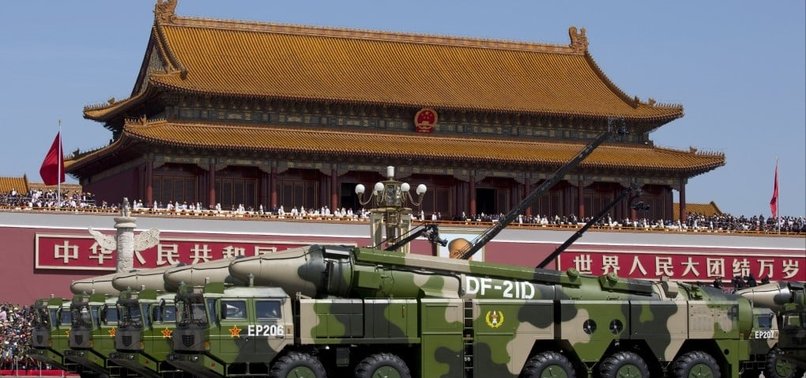SIPRI: unprecedented arms race while East Asia setting spending records
According to the SIPRI report, global military spending hit a new high in 2024, at US$ 2.7 trillion. China accounts for half of all military expenditures in Asia, with spending rising in the Far East Asia, especially by Japan. In the Middle East, Israel is investing 8.8 per cent of GDP in the military, the second-highest percentage in the world.
Bangkok (AsiaNews) – The Stockholm International Peace Research Institute (SIPRI) today released its annual report on global military spending.
The many ongoing wars, from Ukraine to Gaza, in addition to tensions in the Asia-Pacific, are fuelling worldwide military spending, which reached US$ 2.7 trillion dollars last year.
In Asia (especially in the Far East) and the Middle East, the arms race is showing no sign of abating, from Israel and China to Japan and Taiwan.
The top five spending nations – the United States, China, Russia, Germany and India - account for 60 per cent of the total with combined expenditures of US$ 1.635 trillion, with China alone accounting for half of all defence spending in Asia in 2024.
Compared to 2023, this represents a 9.4 per cent increase in military spending, marking the tenth consecutive year of growth but also the steepest year-on-year rise since the end of the Cold War.
The Swedish think tank's study also confirms that an arms race is on in East Asia, a response by several countries in the region to China’s steady increase in military power, which is a cause of great concern among its neighbours.
The Asia-Oceania region spent US$ 629 billion in 2024, up by 6.3 per cent compared to 2023, the largest increase since 2009.
The growth, SIPRI explains, reflects "heightening tensions", especially in East Asia where military budgets have increased by 7.8 per cent, reaching US$ 433 billion.
China is the second-largest military spender in the world, with a 7 per cent increase in its defence budget to an estimated US$ 314 billion, the largest rise since 2015, well within three decades of consecutive growth.
China’s long-term goal is to modernise all military domains by 2035, adding stealth combat aircraft, drones and unmanned underwater vehicles, as well as an enhanced cyber warfare force and nuclear arsenal.
The other side of the coin, China's military build-up has prompted many of its neighbours to increase spending.
Xiao Liang, a researcher with the SIPRI Military Expenditure and Arms Production Programme, notes that the steady rise in Chinese spending over time has “definitely contributed to growing regional concerns”.
The United States and its allies, including Japan, Taiwan, India and Australia, have explicitly cited this as a major factor in their defence planning.
For Liang, “Japan’s increased focus on long-range strike capabilities, Taiwan’s investment in uncrewed aerial vehicles and air-defence systems, and Australia’s shift from broad capability development to targeted systems like Aukus are all reflection of this.”
Japan has allocated $US 55.3 billion (+21 per cent) to its armed forces in 2024, bringing the country's military spending to 1.4 per cent of GDP, the highest since 1958.
The SIPRI report notes that Japan’s rising defence spending is in line with its military enhancement plan for 2022-27, which focuses on long-range strike capabilities and air defence systems.
However, other threats exist in the region, like North Korea's missile programme and Russia's growing military activities in the Far East.
Taiwan too has boosted military spending by 1.8 per cent, to US$ 16.5 billion in 2024, with 18 per cent going to buy US naval systems and the upgrade of its F-16 fighter jets. Taiwan is also developing drones and anti-drone systems against a backdrop of growing tensions with the mainland.
Meanwhile, in the Middle East, where military spending has jumped drastically to an estimated US$ 243 billion, up 15 per cent over 2023, Israel leads the way, since it is engaged on a number of fronts from Gaza and Lebanon to Syria and Yemen.
Military spending by the Jewish state leapt by 65 per cent, to US$ 46.5 billion in 2024. For SIPRI this is “the steepest annual increase since the Six-Day War in 1967.” Military spending now represents to 8.8 per cent of GDP, the second-highest share in the world.
Lebanon's military spending also increased by 58 per cent in 2024 to US$ 635 million, after several lean years due to the country’s economic crisis and political turmoil.
By contrast, Iran's spending fell by 10 per cent, to US$ 7.9 billion in 2024, “despite its involvement in regional conflicts and its support for regional proxies,” the report reads. “The impact of sanctions on Iran severely limited its capacity to increase spending,” it adds.
22/04/2024 11:44
27/04/2020 16:04
09/11/2022 10:45
22/09/2004








.png)










